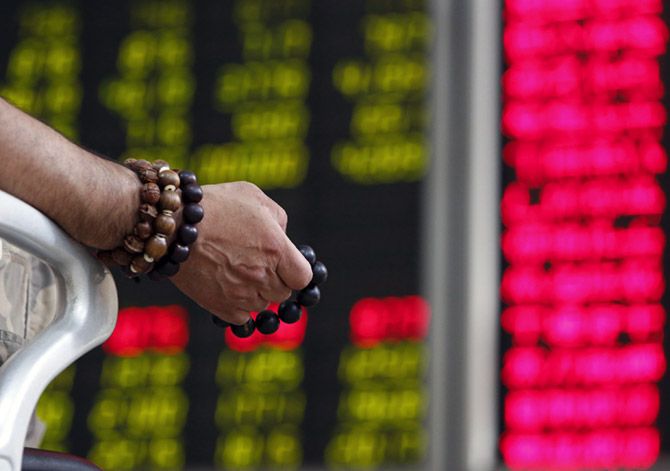
Bringing inflation, interest rates and the size of the Fed's balance sheet to normal levels is a complex task, notes A V Rajwade
A week after the US Federal Reserve increased its short-term interest rates, the dollar has appreciated and so has the rupee; most stock markets, including the Indian market, have gone up; capital outflows from China continue but the rate rise seems to have been digested by the global financial markets without much of a problem.
In fact, the rate rise and its aftermath remind me of the “millennium scare”, just before the world entered the 21st century.
In the late 1990s, the big worry was what would happen when 1999 ended and 2000 began: Would the information technology (IT) systems -- hardware and software -- cope with the change if, for example, the system recorded years in only the last two digits?
Eventually, all the scare stories proved unrealistic. Meanwhile, the scare helped the Indian IT sector acquire a lot of system-check business from global banks and other major users of IT systems and establish a foothold on the global map.
The millennium scare was over on the first day of the 21st century, when the changeover proved to be smooth.
The unwinding of the ultra-low interest rates of the last seven or so years and the huge liquidity poured into the economy could be with us for years, if not longer.
Bringing inflation, interest rates and the size of the Federal Reserve’s balance sheet to normal levels would be an unprecedentedly complex problem.
As for interest rates, the rise needed could have a significant impact on the high-yield, below-investment-grade bonds, which attracted investors in search of higher returns, in the last few years.
There are already some signs of stress in this market, particularly in the energy and mining sectors -- these have been hit not only by lack of liquidity, but also by low oil and other commodity prices.
A few funds dedicated to high-yield bond investments have had to stop redemptions.
And this trend may well gather strength as the rate hike cycle continues.
If the current views of the members of the monetary policy committee hold, there could be four more hikes in 2016, taking the rate to 1.375.
(Market expectations, as reflected in two-year bond maturities, suggest a much smaller increase.)
As for the second normalisation, namely the assets on the central bank’s books, both the quality and the quantity could pose problems when it starts reversing the money supply pumped into the economy: Last week’s rise in the federal funds rate needed the sale of only about $100 billion of securities from the central bank’s books, much of it through re-purchase transactions.
The aggregate amount of assets to be unloaded over the next few years is a few trillion dollars.
Again, the quality of at least some of the assets on the central bank books is questionable: In the wake of the crisis, the Federal Reserve bought even mortgage-backed securities and collateralised debt obligations.
Their prices will be adversely affected by the rise in interest rate, as also the quality of those bonds and the capital charges their purchase would attract.
Overall, the banking system is unlikely to be too enthusiastic to buy the bonds until the interest rate rise cycle is completed.
No wonder liquidity in the bond market is, as it is, poor.
(Will the loss on bond sales by the Federal Reserve reflect in accounting losses in its books? And what could be the scale?)
In the “will she, won’t she” focus on the Federal Reserve, most of us overlooked something that happened across the Atlantic, in the euro zone. The European Central Bank had its policy meeting a couple of weeks before the Fed, and, as expected, extended the monetary easing and cut its key rate to minus 0.3 per cent per annum, since inflation is still well below the target.
(Many non-euro currencies in Europe also have negative rates.) Considering the current fashion in financial markets, the easing should have led to a weakening of the euro.
But as it happened, the currency strengthened.
Why? Ostensibly because the omnipotent and omniscient -- if not omni-beneficent -- markets were expecting a larger dose of liquidity and still lower interest rates.
Promptly, the ECB governor had to issue a statement affirming that there is 'no limit' to the bank’s easing: It obviously wants a weaker euro for its inflation target. For the sake of record, the euro weakened after the clarifications.
A V Rajwade is chairman, A V Rajwade & Co Pvt Ltd
The image is used for representational purpose only. Photograph: Kim Kyung-Hoon/Reuters.











 © 2025
© 2025